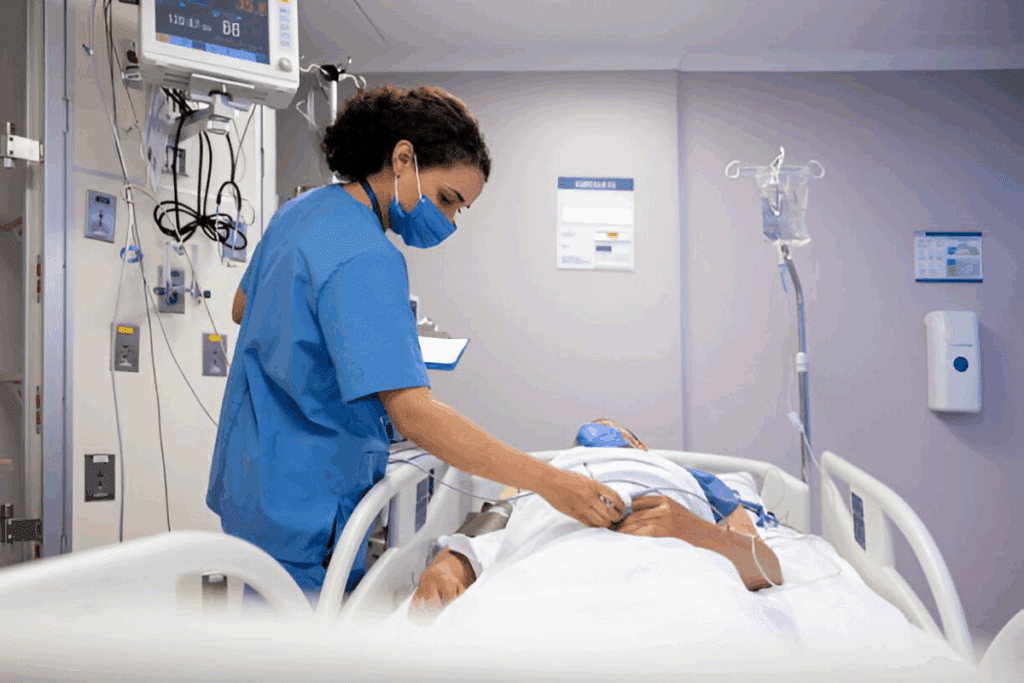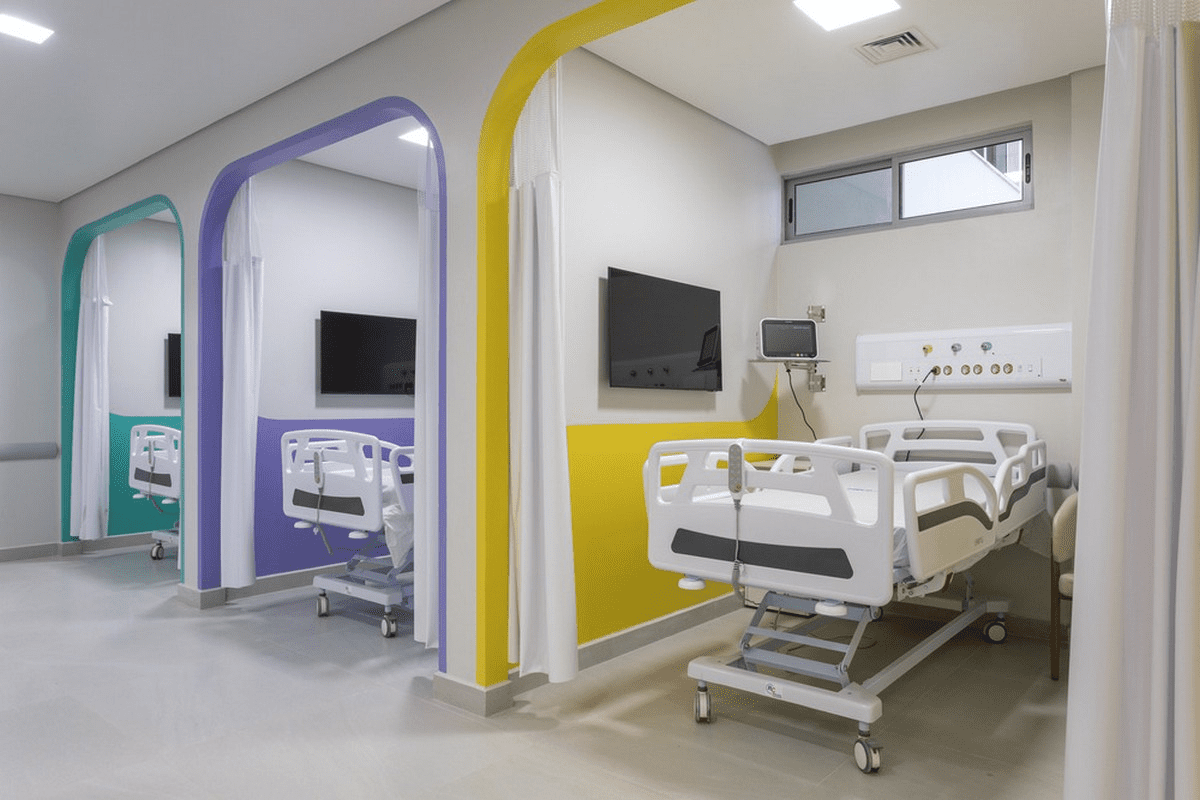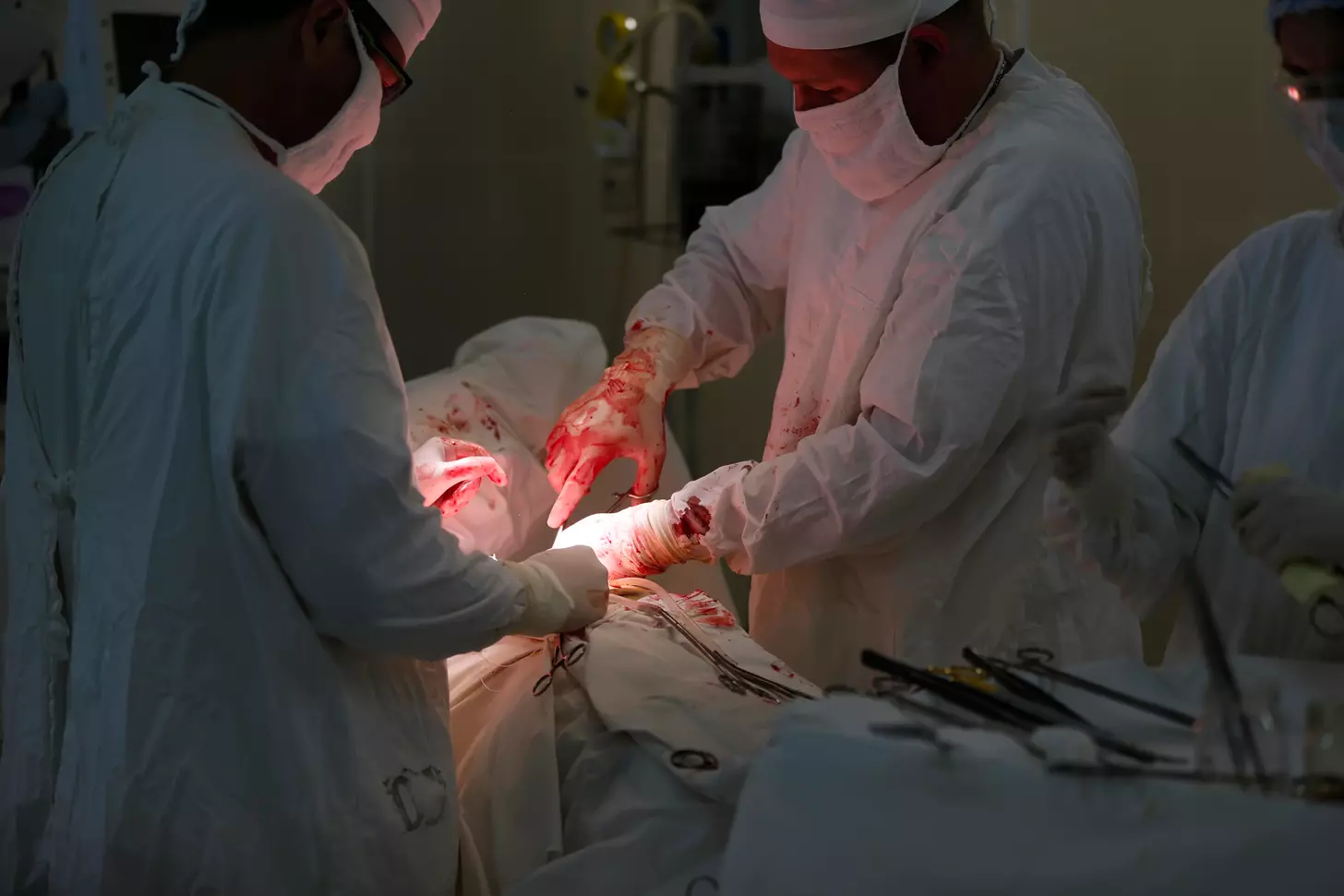Last Updated on November 26, 2025 by Bilal Hasdemir

We are seeing a big change in how surgeries are done with minimally invasive surgery (MIS). This new way uses small cuts, special tools, and high-tech images. It lets doctors do big jobs without hurting the patient too much.
The benefits of minimally invasive surgery are many. Patients feel less pain and recover faster. At Liv Hospital, we aim to give top-notch care and provide extensive support for international patients as well.
With the latest in MIS, we make sure patients have less pain and faster recovery. This leads to better results and care for our patients.
Key Takeaways
- Reduced postoperative pain
- Quicker recovery times
- Less trauma to the patient
- Improved patient outcomes
- Advancements in surgical technology
Understanding Minimally Invasive Surgery: A Modern Approach to Treatment

Minimally invasive surgery is changing how we treat patients. It offers effective treatments with fewer side effects. This modern method has changed how surgeries are done.
What Defines Minimally Invasive Surgery
Minimally invasive surgery uses small cuts, usually under an inch, for tools and a camera. This method causes less damage and trauma than old-school surgery. It means patients heal faster.
How MIS Differs from Traditional Open Surgery
The main difference is the size of the cuts. Open surgery needs a big incision for direct access. But MIS uses small cuts, hurting less tissue.
MIS also means less blood loss than open surgery. This is good for patients in complex surgeries. It can cut down on blood transfusions and other issues.
Common Types of Minimally Invasive Procedures
There are many types of MIS, like laparoscopic surgery, arthroscopic surgery, and robotic-assisted surgery. Each has its own uses and benefits. They range from removing gallbladders to complex surgeries with robots.
Knowing about MIS helps patients see its advantages. It leads to less pain after surgery, shorter hospital stays, and faster recovery.
The Evolution of Surgical Techniques: From Open Surgery to MIS

Surgery has changed a lot, from old open surgery to new minimally invasive surgery (MIS). Now, surgeries are less invasive and more effective. This change has made a big difference in how we do surgery today.
Historical Development of Surgical Approaches
Old surgeries were very invasive, causing a lot of harm to patients. Open surgery, with big cuts, was common. But it led to long recovery times, a lot of pain, and more risks.
Minimally invasive surgery (MIS) changed all that. MIS uses small cuts and special tools to see inside the body. It’s less painful, you stay in the hospital less, and you recover faster.
Technological Advancements Enabling MIS
Technology has been key in making MIS better. Some important advancements are:
- Laparoscopic Instruments: These tools help surgeons work through small cuts.
- Robotic-Assisted Surgery: This tech makes surgeries more precise, allowing for more complex operations.
- High-Definition Imaging: New imaging helps surgeons see better, making surgeries safer and more accurate.
These tech improvements have let surgeons do more MIS procedures. This has helped many different areas of surgery.
Current Trends in Minimally Invasive Techniques
Now, MIS is getting even better. Trends focus on making it less invasive, more precise, and better for patients. Some key trends are:
- Single-Incision Surgery: Doing surgery through just one cut, making it even less invasive.
- Natural Orifice Transluminal Endoscopic Surgery (NOTES): This method uses natural openings, like the mouth, to avoid cuts.
- Enhanced Robotic Systems: New robots will make MIS even more precise and controlled.
The U.S. MIS market is growing fast, expected to almost double by 2033. This growth is because MIS is faster, safer, and less painful. As tech keeps improving, MIS will likely become even more common, benefiting patients more and more.
Key Benefits of Minimally Invasive Surgery for Patients
Patients who have minimally invasive surgery get many benefits. These benefits make their life better. It’s important to know these advantages to see the value of MIS in healthcare today.
Overview of Patient-Centered Advantages
Minimally invasive surgery has many benefits for patients. These include less pain after surgery, smaller scars, and faster healing. This is because MIS uses smaller cuts, causing less damage and pain.
Advantages of Minimally Invasive Surgery also include fewer infections, less blood loss, and smaller scars. These help patients recover smoothly and comfortably.
Quality of Life Improvements
MIS improves patients’ quality of life in big ways. It reduces pain and scarring, letting patients get back to their daily life quickly. This fast recovery makes their life better, allowing them to do what they normally do without much trouble.
Studies show MIS patients recover faster. This quick recovery is a big reason why they are happy with their surgery.
Long-term Health Outcomes
MIS also leads to better health in the long run. Its minimally invasive nature means fewer complications like infections and adhesions. This results in better health overall.
| Benefits | Traditional Surgery | Minimally Invasive Surgery |
| Postoperative Pain | Higher | Lower |
| Recovery Time | Longer | Shorter |
| Scarring | More Visible | Less Visible |
| Complications | More Frequent | Less Frequent |
Understanding the benefits of MIS helps us see its value. It improves patient outcomes and the quality of care in healthcare.
Benefit 1: Significantly Reduced Postoperative Pain
MIS uses smaller incisions and advanced tools, causing less tissue damage. This leads to less pain after surgery. It’s a big reason why both patients and surgeons choose MIS.
How Smaller Incisions Minimize Pain
Smaller incisions in MIS mean less tissue trauma than big incisions in open surgery. This less damage means less pain after surgery. Studies show MIS patients feel less pain and discomfort.
Pain Management After MIS
Managing pain well is key after MIS. Even though MIS causes less pain, comprehensive pain management strategies are used. These include medicines and other therapies based on the patient’s needs.
Patient Testimonials on Pain Reduction
Patient stories often talk about less pain after MIS than traditional surgery. Many say they had a smoother recovery with less pain meds. This makes their surgery experience better.
“I was amazed at how little pain I experienced after my MIS procedure. The recovery was much easier than I expected.”
— A MIS patient
MIS is a big step forward in surgery, giving patients many benefits like less pain after surgery. As technology gets better, MIS will keep improving, making patient outcomes even better.
Benefit 2: Faster Recovery and Shorter Hospital Stays
Minimally invasive surgery (MIS) causes less tissue damage and pain after surgery. This means patients can heal faster and leave the hospital sooner. The smaller cuts and less invasive approach of MIS are the main reasons for this.
Average Recovery Timelines: MIS vs. Traditional Surgery
Recovery times differ a lot between MIS and traditional surgery. Patients who have MIS usually recover in a few weeks. Those with traditional surgery might take months to fully heal. This is because MIS causes less harm to the body.
Reduced Hospitalization Requirements
One big plus of MIS is needing less hospital time. Patients often get to go home sooner after MIS. This makes them more comfortable and lowers the chance of getting sick in the hospital. It also helps save on healthcare costs.
Getting Back to Daily Activities Sooner
Patients who have MIS can get back to their daily lives faster. This is a big plus because it lets them go back to work, spend time with family, and enjoy activities sooner. They don’t have to wait as long as those who had traditional surgery.
In short, minimally invasive surgery offers many benefits. It reduces pain, speeds up recovery, and shortens hospital stays. These advantages make MIS a better choice for many surgeries, improving patients’ lives.
Benefit 3: Minimized Scarring and Improved Cosmetic Results
Using smaller incisions in MIS means less noticeable scarring. This is a big plus for those worried about how they’ll look after surgery. Scarring can really worry people.
Aesthetic Advantage of Smaller Incisions
Smaller incisions in MIS lower the risk of problems and make scars less visible. This is because smaller wounds heal quicker and with less damage. This makes patients happier with how they look after surgery.
People who have MIS surgery are usually more pleased with their scars than those who have open surgery. This is because MIS uses fewer and smaller cuts.
Long-term Appearance of MIS Scars
MIS scars look better over time than those from traditional surgery. They fade and flatten, making them almost invisible after a year or two. Our patients say their scars are hardly noticeable after a couple of years.
| Characteristics | MIS Scars | Traditional Surgery Scars |
| Size | Small, often less than 1 cm | Large, can be several cm |
| Visibility Over Time | Become less noticeable | May remain visible |
| Healing Time | Faster healing | Slower healing |
Psychological Benefits of Reduced Scarring
Less scarring from MIS has big mental health benefits. It can make people less worried and stressed about their scars. They often feel more confident and comfortable in their skin.
We think the mental health benefits of less scarring are key to MIS’s benefits. By making surgery look better, we can make our patients’ lives better and make them happier with their surgery.
Benefit 4: Lower Risk of Complications and Infections
Minimally Invasive Surgery (MIS) uses smaller cuts, which lowers the chance of problems and infections. This is a big plus, as it helps patients heal faster and better.
Blood Loss Reduction
MIS leads to less blood loss during surgery. This means fewer blood transfusions are needed. Less blood loss helps patients recover more steadily and safely.
| Surgical Approach | Average Blood Loss | Transfusion Rate |
| MIS | 100 ml | 5% |
| Traditional Open Surgery | 300 ml | 15% |
Decreased Infection Rates
The small cuts in MIS greatly lower infection risks. This is because MIS keeps internal tissues away from the outside world. This makes recovery smoother and safer.
Fewer Post-Surgical Complications
MIS also means fewer complications after surgery. Its precise and gentle approach leads to fewer issues like adhesions and hernias. These problems often come from traditional open surgery.
The benefits of MIS are clear. It leads to fewer infections, less blood loss, and less scarring. This makes MIS a great choice for many patients.
Benefit 5: Expanded Access to Surgery for More Patients
Minimally invasive surgery uses new tech and methods. This has opened surgery to more people. New and improved ways make it easier for more to get help.
MIS Options for High-Risk Patients
High-risk patients benefit a lot from MIS. MIS reduces surgery’s impact. This makes it safer for those who can’t handle traditional surgery.
For example, those with serious heart issues or obesity face big risks with open surgery. MIS is a gentler option. It can cut down recovery time and pain.
Robotic-Assisted and Laparoscopic Approaches
Robotic and laparoscopic surgeries are big steps forward in MIS. They bring more precision and control to surgery. Robotic surgery gives surgeons better views and skills for complex tasks.
“The integration of robotic technology into surgery has been a game-changer, enabling us to perform complex procedures with greater precision and minimal invasion.”
| Technique | Benefits | Patient Outcomes |
| Robotic-Assisted Surgery | Enhanced precision, greater control | Less postoperative pain, quicker recovery |
| Laparoscopic Surgery | Minimally invasive, reduced scarring | Shorter hospital stays, fewer complications |
Growing Availability Across Different Demographics
MIS is becoming more available to everyone. This includes older adults, younger patients, and people from different backgrounds. More people can now get the surgery they need.
More people will get to use MIS as it grows. This means more can benefit from these advanced surgeries.
Benefit 6: Reduced Overall Healthcare Costs
Minimally invasive surgery (MIS) brings big savings in healthcare costs. It cuts down on hospital time, easing the financial load on healthcare systems. We’ll look at how these savings come about.
Economic Impact of Shorter Hospital Stays
Shorter hospital stays mean lower costs. MIS lets patients leave the hospital sooner. This frees up space and resources for others, saving money.
Decreased Need for Pain Medication
MIS causes less damage and pain after surgery. This means patients need less pain medicine. It’s better for them and cheaper for everyone.
Lower Rates of Readmission and Complications
MIS is precise and less invasive, leading to fewer problems and less need for readmission. This saves money by avoiding extra treatments or long hospital stays.
To show MIS’s cost benefits, let’s compare:
| Cost Factor | Traditional Surgery | MIS Surgery |
| Average Hospital Stay | 5-7 days | 1-3 days |
| Pain Medication Costs | Higher | Lower |
| Readmission Rates | Higher | Lower |
| Total Cost | $15,000 – $20,000 | $10,000 – $15,000 |
The table shows MIS saves money in many ways. It reduces hospital stay, pain medication, and readmission rates. This makes high-quality care more affordable for more people.
In summary, MIS’s cost savings are a big plus for patients and healthcare. As MIS improves, these savings will grow. This will make MIS even more valuable in healthcare today.
Benefit 7: Improved Precision and Surgical Outcomes
Minimally invasive surgery (MIS) is known for its precision, leading to better care for patients. It offers less pain, shorter hospital stays, and quicker recovery times. This is thanks to its high precision. We use the latest technologies and tools to make sure surgeries are done with great accuracy.
Enhanced Visualization During Surgery
One key reason MIS is so precise is the better view it gives surgeons during surgery. New imaging tech lets them see the area clearly and in detail. This helps them make more accurate cuts and repairs.
For example, high-definition cameras and laparoscopic tools let surgeons see tiny details. This reduces the chance of mistakes and improves results.
Greater Surgical Accuracy with Specialized Tools
MIS uses special tools that work with advanced imaging. These tools are made to move precisely and cause little damage. This helps make the surgery a success.
Better Long-term Success Rates
The better view and precise tools in MIS lead to better long-term results for patients. It causes less damage and lowers the risk of problems. This means patients heal faster and have better lasting results.
Here’s a comparison of traditional open surgery versus minimally invasive surgery in terms of precision and outcomes:
| Aspect | Traditional Open Surgery | Minimally Invasive Surgery |
| Visualization | Limited by the size of the incision | Enhanced with high-definition imaging |
| Surgical Accuracy | Dependent on the surgeon’s skill and experience | Improved with specialized tools and technology |
| Long-term Success Rates | Variable, with higher risk of complications | Generally higher due to precision and minimal tissue damage |
Minimally invasive surgery has changed how we do surgery, making it safer and more effective for patients.
In conclusion, MIS’s precision and better outcomes make it a great choice for many surgeries. By using the latest tech and tools, we can give patients better care and improve overall quality of care.
Conclusion: The Future of Minimally Invasive Surgery
Minimally invasive surgery (MIS) is changing how we care for patients. It uses small cuts, special tools, and advanced imaging. This way, it causes less damage than old-school surgery.
It leads to less pain after surgery, quicker healing, and better results. The benefits of MIS are making surgery better for more people. This also helps lower healthcare costs.
As technology and skills keep getting better, MIS will keep getting better too. We hope to see even better treatments soon. This will make life better for people all over the world.
We think MIS will become more popular in different areas of medicine. This will shape the future of surgery in big ways.
FAQ
What is minimally invasive surgery?
Minimally invasive surgery (MIS) is a new way to operate. It uses small cuts, special tools, and high-tech images. This method does complex surgeries with less harm to the patient.
What are the benefits of minimally invasive surgery?
MIS has many benefits. It causes less pain after surgery, and patients recover faster. There’s also less scarring, fewer complications, and lower costs. It makes surgery safer and more precise for more people.
How does MIS differ from traditional open surgery?
MIS is different because it uses small cuts. These cuts are less than an inch long. In contrast, open surgery needs a bigger cut to reach the area being operated on.
What are the common types of minimally invasive procedures?
There are several types of MIS. These include laparoscopic, arthroscopic, and robotic-assisted surgery.
Is MIS associated with less pain compared to traditional surgery?
Yes, MIS causes less pain after surgery. This is because the small cuts cause less damage to the tissue. This leads to less pain for the patient.
How does MIS impact recovery time?
MIS helps patients recover faster. They often need to stay in the hospital for less time. This means they can get back to their daily life sooner.
What are the advantages of MIS in terms of scarring?
MIS leaves less scarring. The small cuts mean less visible marks. This improves how patients look and feel after surgery.
Does MIS reduce the risk of complications and infections?
Yes, MIS has fewer complications and infections. This is because there’s less blood loss and smaller cuts. This makes it safer than traditional surgery.
Is MIS suitable for high-risk patients?
Yes, MIS is good for more patients. It’s helpful for those who might not be good candidates for traditional surgery. Robotic and laparoscopic methods are very beneficial.
How does MIS impact healthcare costs?
MIS can save money. It means shorter hospital stays and less need for pain meds. There are also fewer complications and readmissions.
What advancements have enabled the development of MIS?
New technology has made MIS possible. This includes laparoscopic tools and robotic surgery. These advancements have grown MIS.
What are the long-term benefits of MIS?
MIS offers long-term benefits. It improves patients’ quality of life and health outcomes. It also makes surgeries more precise.
What is the future of minimally invasive surgery?
MIS will likely grow as technology improves. New techniques and tools will make it even better. It will help more people and offer more benefits.






